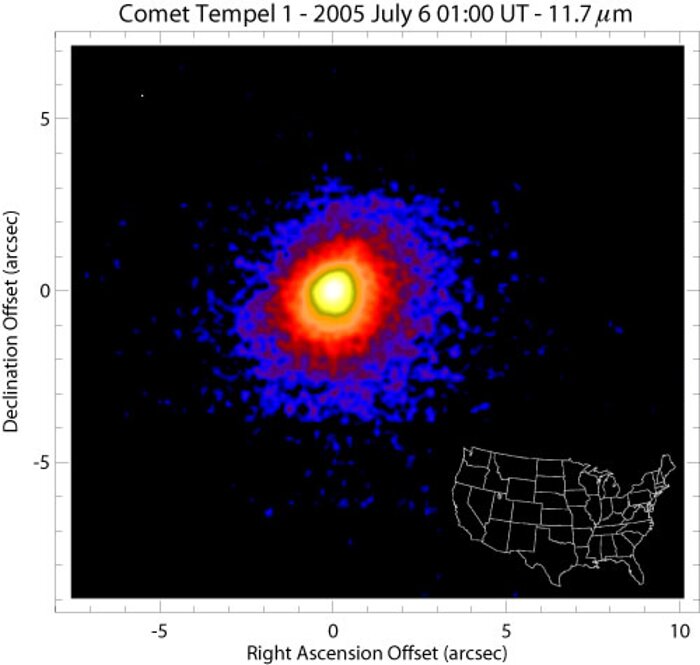Observation of Comet P9/Tempel
This T-ReCS observation from Gemini South in Chile of Comet P9/Tempel was obtained at mid-infrared wavelengths (11.7um). This type of light acts as a tracer of the extended distribution of dust in the coma of the comet. A comet's coma is the fuzzy haze of gas and dust that surrounds, and is produced by, the comet's true nucleus. In this picture, Comet Tempel's coma is seen to extend to sizes larger than 9 arcseconds (5800 km or 3700 miles) in diameter, which is larger than the continental United States (2450 miles).
The impact occurred on the nucleus of the comet which is so small and surrounded by such a bright coma, that it cannot be seen directly in this image. However, the material dispersed by the impact injected fresh new material to the coma. Measurements of the coma in this image show that it is still at an elevated brightness 19 hours after impact at a level 20% brighter than before impact.
These T-ReCS observations were part of a coordinated effort between the the twin Magellan 6.5meter telescopes and the DuPont 100-inch telescope of Las Campanas Observatory, Spitzer Space Telescope, and Gemini South Telescope. The project was headed by Dave Osip of Las Campanas and James De Buizer of Gemini South. Co-investigators are Joanna Thomas-Osip (Las Campanas Observatory), Susan Lederer (California State University San Bernadino), and Casey Lisse (Johns Hopkins Applied Physics Laboratory/University of Maryland).
Créditos:International Gemini Observatory/NOIRLab/NSF/AURA
About the Image
| Id: | geminiann05010b |
| Tipo: | Collage |
| Release date: | 2 de Julio de 2005 a las 05:00 |
| Related announcements: | geminiann05010 |
| Size: | 500 x 475 px |
Sobre el Objeto
| Nombre: | Comet Tempel 1, Gemini South, T-ReCS |
| Categoría: | Solar System |
